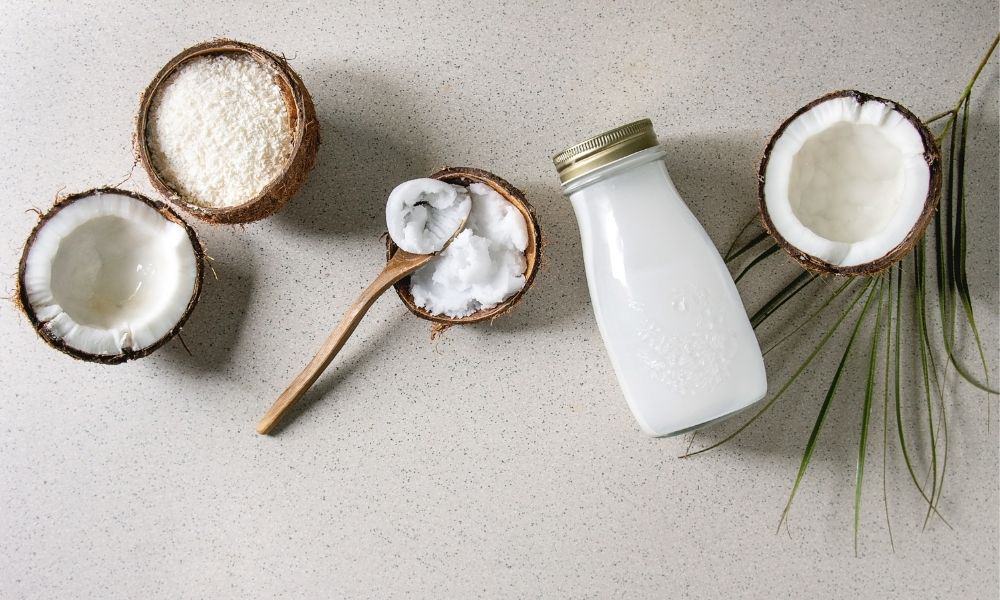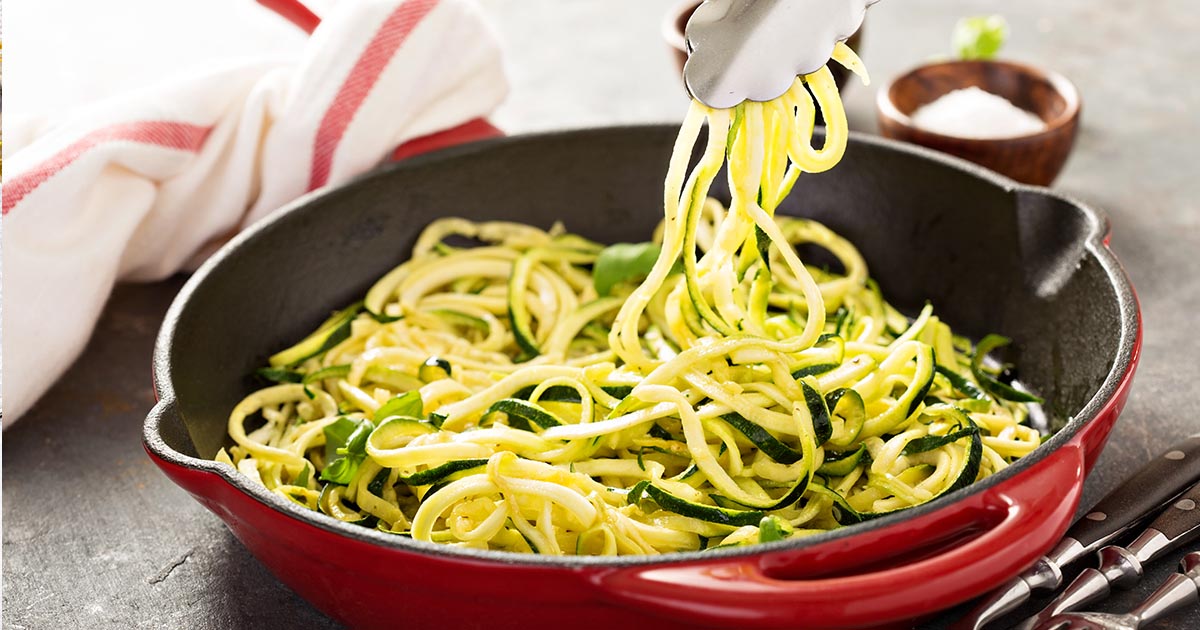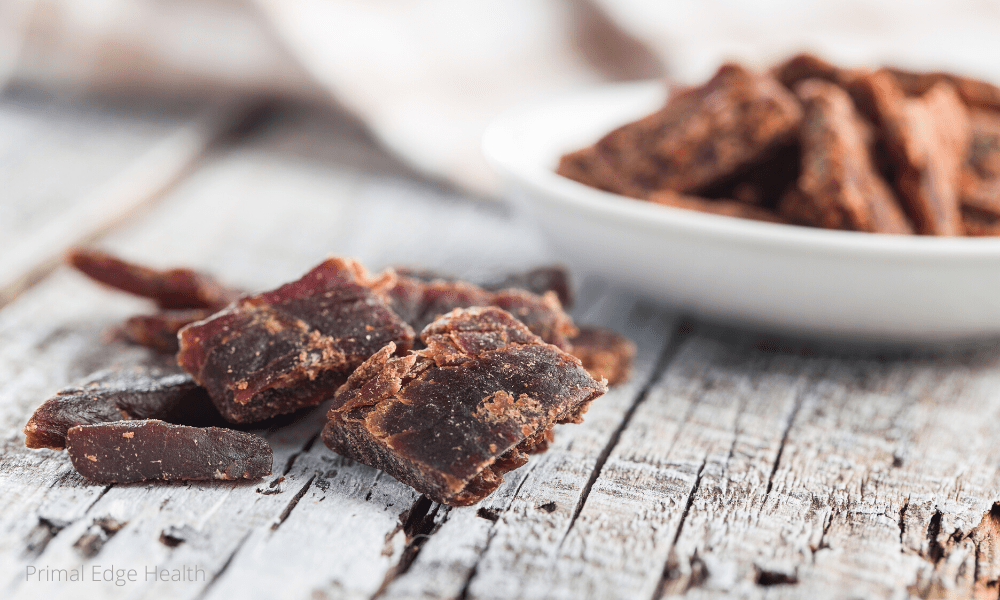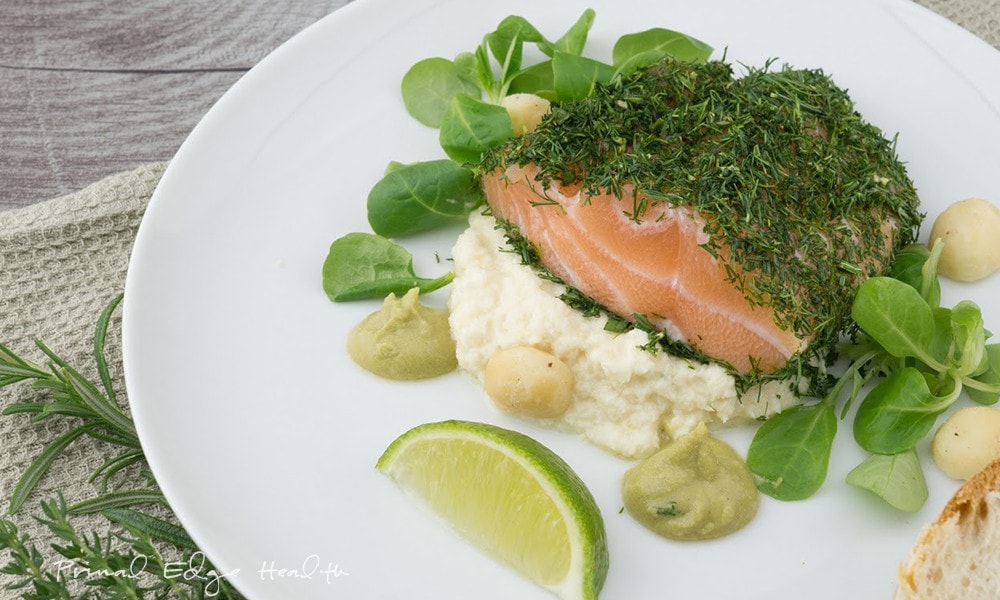26 Low-Carb Vegetables You’ll Love to Eat Everyday
Primal Edge Health participates in the Amazon Services LLC Associates Program and other affiliate programs and therefore, may collect a share of sales or other compensation from the links on this page. This comes at no additional cost to you, and all the prices and availability are accurate at the time of publishing.
Looking for the tastiest vegetables to include in your keto and low-carb diet? Explore 23 best low carb vegetables with this helpful guide to make healthy, delicious choices. The mouthwatering veggies on this list are not only low in carbs but are also incredibly flavorful.

As a proponent of both the keto and low-carb diets, I’ve made it my mission to find as many low-carb whole foods as possible so I don’t miss out on all the essential nutrients they provide. After diving deep into all the options, I’ve come up with a list of some of the best and most nutritious low-carb veggies.
Whether following a low-carb eating plan or simply wanting to add more healthy options to your meals, these vegetables will satisfy your tastebuds without weighing you down. Let’s get started.
Best Low-Carb Vegetables
Incorporating low-carb vegetables and nutritious greens into your meals offers a range of flavors and textures, making it easier to maintain a healthy and balanced diet while minimizing your carb intake. Adding all the health benefits of those low-carb veggies high in fiber and filled with a great source of vitamins and minerals.
Sure, you might think you can get micronutrients from supplements, but nothing beats the real thing. Vegetables are a rich source of essential nutrients like:
- Vitamin A
- Vitamin C
- Vitamin K
- Folate (Vitamin B9)
- Potassium
- Iron
- Antioxidants
- Phytonutrients
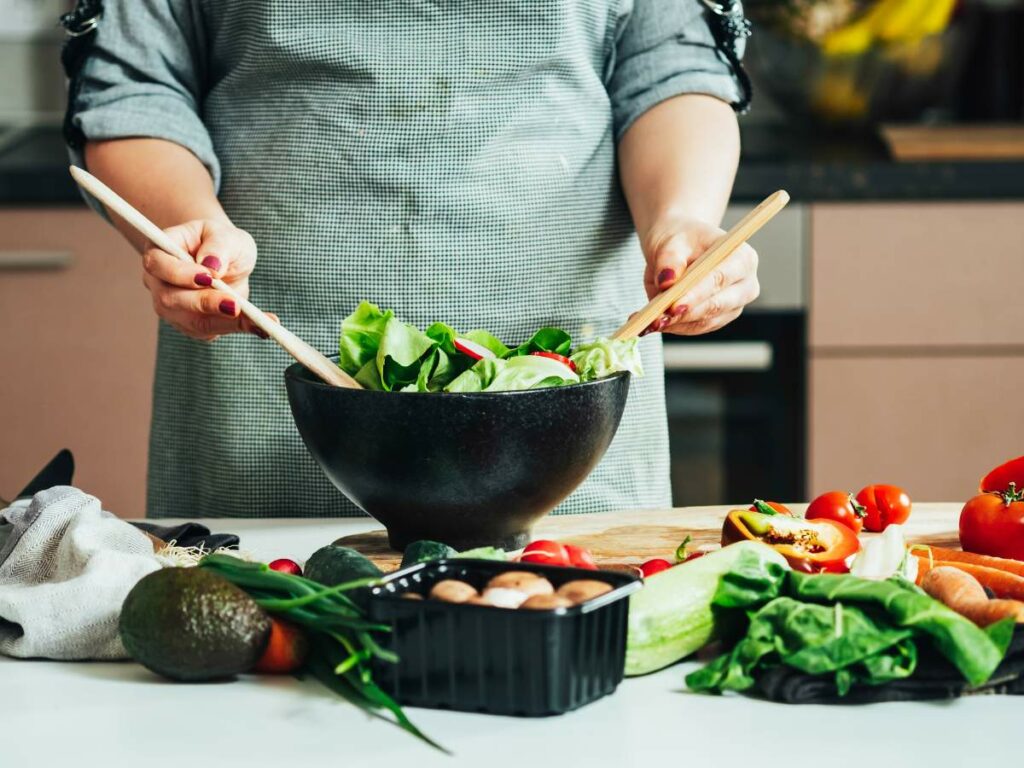
Carb Count and Net Carbs per Cup in Keto and Low-Carb Diets
When following a keto or low-carb diet, it is essential to be mindful of the carb count and net carbs per cup of vegetables, as these factors can affect your ability to stay in ketosis or reach your desired carb intake. By knowing the carb content and calculating net carbs, you can choose and create meals that align with your dietary goals.
Every vegetable is different, and you always have to check the values. However, whichever keto-friendly vegetables you pick from the list will be an excellent replacement for starchy vegetables high in carbs.
For example, one cup of raw cauliflower rice, which is well known and used in the keto diet, contains 5 grams of total carbs and 2 grams of fiber, giving you 3 grams of net carbs. This, compared to 45 grams of carbs in a cup of rice, answers it all.
Leafy Greens
Leafy greens are among the top choices for the best vegetables. Not only are they keto, but they also offer a burst of natural goodness. Here are a few standout options.
Lettuce
One of the best things about lettuce is that you can eat a lot of it and you’re likely not getting so many carbohydrates or calories. That’s why it’s a staple for many low-carb fans.
It also provides dietary fiber, which is beneficial for digestive health. Lettuce varieties, such as romaine, iceberg, and butterhead, are versatile and can be used in salads, wraps, sandwiches, or as a crunchy addition to various dishes like tostadas and tacos.
Spinach
Spinach is not only keto but also rich in flavor. It adds a delightful crunch to any dish with its vibrant green leaves. It is perfect for salads, green smoothies, stir-fries or even pizza toppings. Try it in Spinach gnocchi and spinach salmon roulade.
Kale
Kale has gained popularity in recent years, and for a good reason. This leafy green is loaded with antioxidants. Enjoy it sautéed with a sprinkle of garlic, or add it to your morning smoothie and low-carb omelette for a nutrient-packed boost.
Kale is also incredibly low in oxalates, an antinutrient known to increase the risk of calcium oxalate stones. So, if have a propensity to develop kidney stones, you can swap kale with high-oxalate greens like spinach.
Arugula
Known for its peppery taste, arugula can bring a zing to your salads and sandwiches. It pairs perfectly with tangy dressings and can elevate the flavor of any dish.
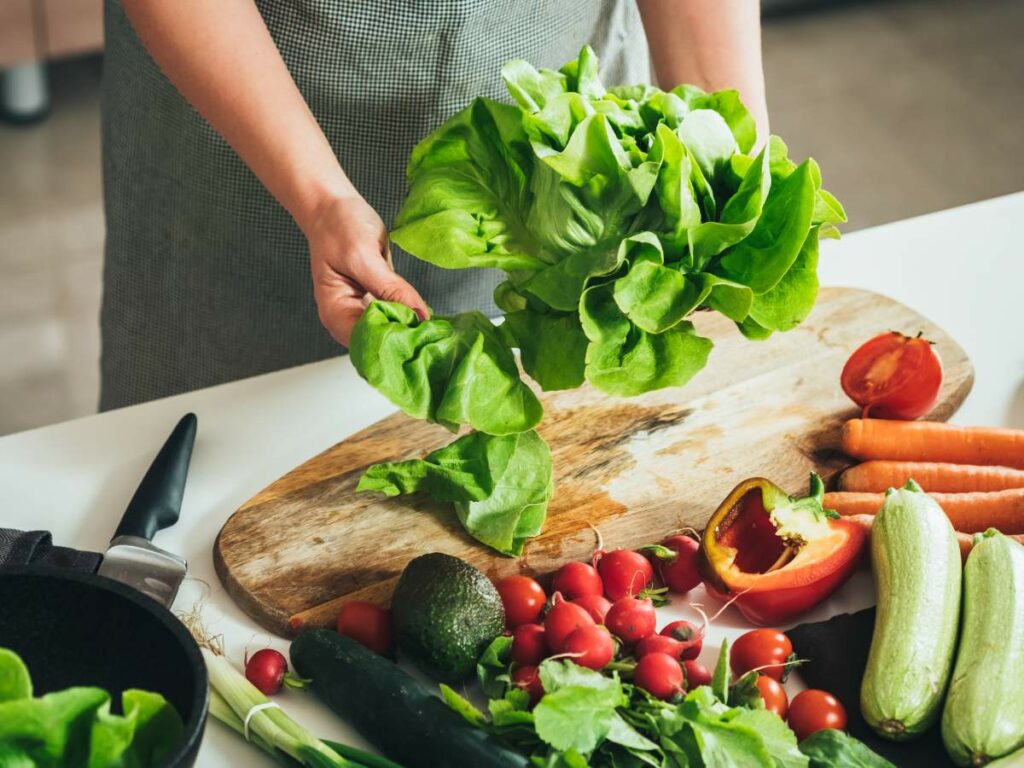
Cruciferous Vegetables Low in Carbs
Cruciferous vegetables are another excellent choice when it comes to low-carb options. These veggies belong to the cabbage family and are known for their distinctive taste. Here are a few of the best choices.
Broccoli
Broccoli is a versatile vegetable that can be enjoyed steamed, roasted or raw in a salad. It is packed with fiber and vitamin C, making it a nutritious addition to any meal.
Broccoli is also a very versatile ingredient. You can use it for quick and easy recipes like these low-carb broccoli fritters or more elaborate meals like this chicken bacon ranch casserole. If your kids don’t like broccoli, you can blend them up and add to just about any dish, such as pastas, stews, and soups.
Cauliflower
Cauliflower has become a superstar in the low-carb world thanks to its ability to mimic rice or mashed potatoes. This veggie offers endless possibilities for satisfying your carb cravings, from cheesy cauliflower rice to cauliflower tortillas.
Brussels sprouts
Brussels sprouts may have a bad rap from childhood memories, but they delight when appropriately cooked. Roasted Brussels sprouts wrapped with bacon or Brussels sprouts casserole can be a tasty dish with low carbs and flavor.
Cabbage
Cabbage comes in different varieties, such as green cabbage, red cabbage and Savoy cabbage, each with its distinct flavor and texture. Use it fresh as a wrap for Korean ground beef, fermented in sauerkraut, or cook it like noodles in a sausage alfredo; every bite will be enjoyable.
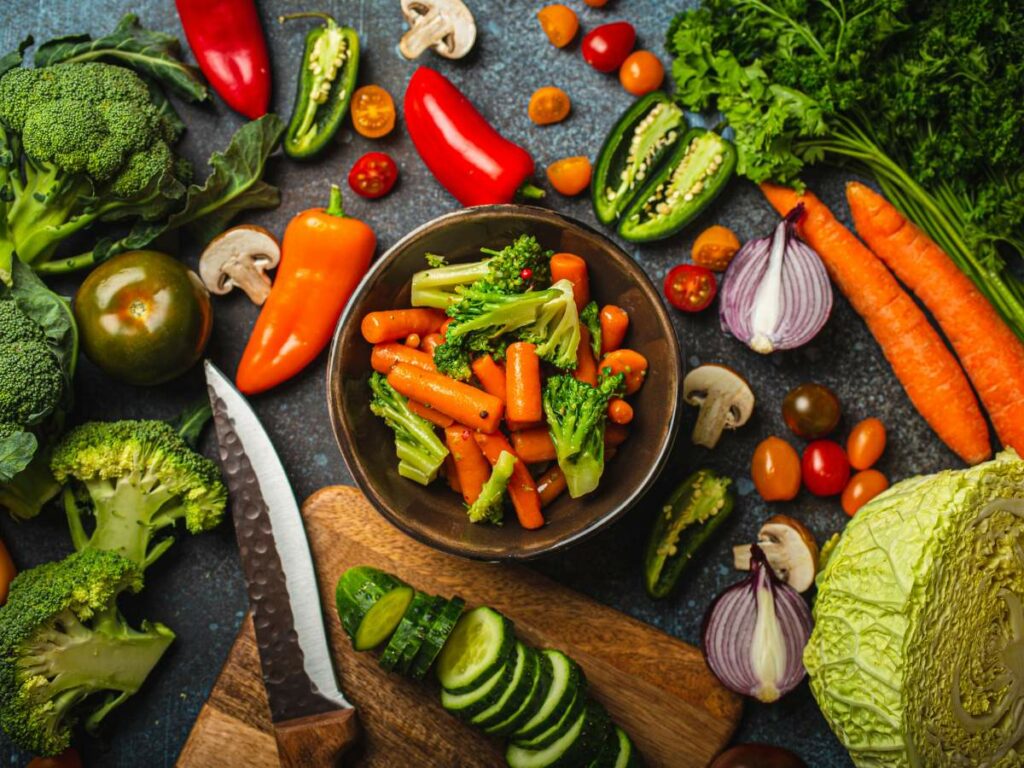
Seasonal Best Low-Carb Vegetables
Another great aspect of low-carb vegetables is that many of them are available seasonally, providing you with the freshest and most flavorful options. Incorporating seasonal vegetables into your meals ensures optimal taste and supports local farmers. Here are a few seasonal vegetables to consider.
Asparagus
Spring brings tender and vibrant asparagus spears high in folate, a vital nutrient for cell growth and development. Enjoy grilled asparagus or add it to omelets for a delightful treat. Learn how to cook asparagus to make asparagus quiche or asparagus pasta.
Zucchini Blossoms
In the summertime, zucchini plants produce delicate and edible blossoms that can be stuffed, battered and fried to perfection. These delightful blooms add a touch of elegance to any dish.
Pumpkin and Squash
Fall welcomes the arrival of pumpkins, which are not only great for carving but also pumpkin muffins, pumpkin bread, and sugar-free pumpkin spice syrup. Roast pumpkin fries or use pureed pumpkin as a base for low-carb pumpkin soup.
Root Vegetables
Root vegetables are a versatile category of vegetables that grow underground. While they tend to be higher in carbohydrates compared to leafy greens and cruciferous vegetables, they offer a variety of flavors and textures. Here are a few popular root vegetables and a brief description of each.
Parsnips
Resembling pale carrots, parsnips have a sweet and nutty flavor that intensifies when roasted or cooked. They can be used in soups, stews or roasted vegetable medleys for added depth of flavor. I like them as a low-carb alternative in hearty dishes like slow cooker pot roast and braised beef heart.
Turnips
These vegetables taste slightly peppery and can be enjoyed raw or cooked. Turnips are low in calories and carbohydrates, making them an excellent option for those on a low-carb or ketogenic diet. They can be roasted, mashed or added to soups and stews for a nutritious and satisfying meal.
Radishes
Radishes come in various colors, shapes, and sizes, offering a crunchy texture and a peppery flavor. They can be enjoyed raw in salads, pickled, cooked or roasted for a unique twist on traditional vegetables.
Carrots
Known for its vibrant orange color and beta-carotene that supposedly supports eye health, you can’t make a keto carrot cake without them! To be fair, a slow cooker beef stew isn’t the same without carrots either, but somehow it’s not quite as exciting as cake. They taste slightly sweet and can be enjoyed raw as a crunchy snack or cooked in egg roll soup, stir-fries, or roasted dishes.
Beets
With their deep purple-red hue, beets are visually stunning. They have a subtly earthy and slightly sweet flavor and can be enjoyed roasted, steamed, pickled in salads or as a delicious bright beet spread. You can also use the leaves in a beet green salad.
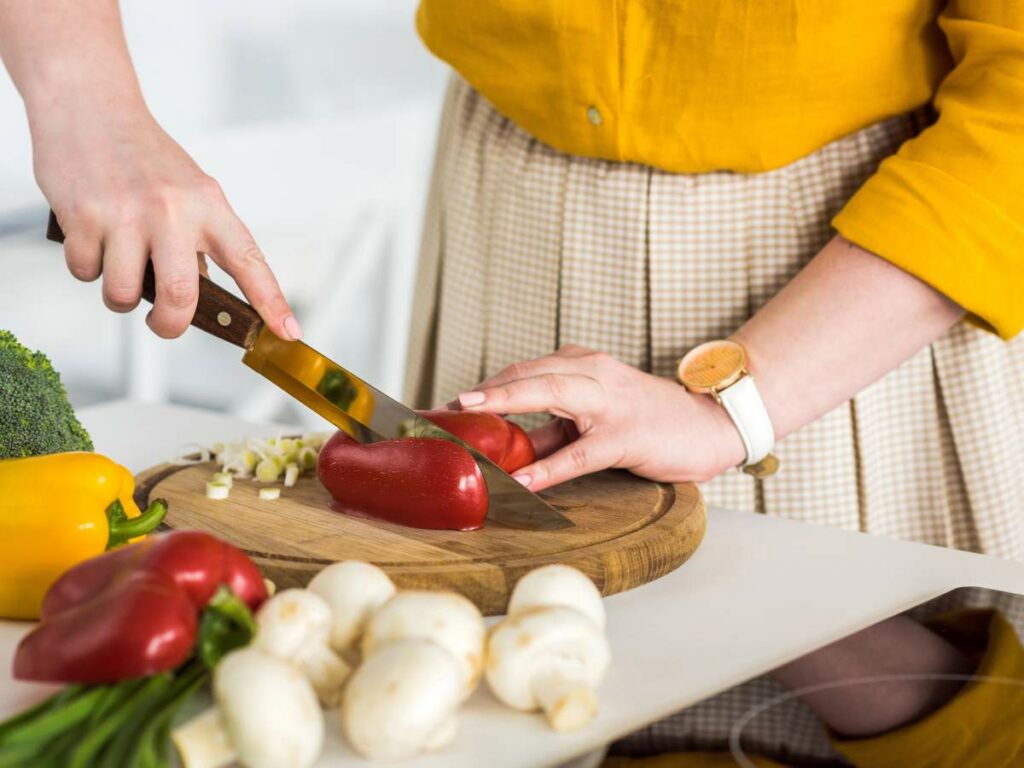
Other Low-Carb Favorites
While leafy greens, cruciferous vegetables and bell peppers steal the spotlight, there are other vegetables worth mentioning.
Zucchini
Zucchini is a versatile vegetable that can be spiralized into noodles for chicken zoodle soup, baked, stuffed or added raw to zucchini butter. It adds a satisfying texture to various dishes. I use shredded zucchini as a hidden ingredient to chewy chocolate chip cookies!
Eggplant
Eggplant is a vegetable often used as a substitute for higher-carb ingredients like pasta or bread. Try grilling or baking slices of eggplant or stuffing them with venison bolognese for a delicious alternative.
Cucumbers
Crisp and refreshing cucumbers are an excellent choice for salads or as light chips. They are high in hydration, making them perfect for hot summer days. I never cook them but I do like to ferment them into pickle relish.
Green Beans
Green beans, also known as string beans or snap beans, are versatile vegetables that add a satisfying crunch to green bean casserole and other meals. They offer a delightful sweetness and earthiness when steamed, sautéed or stir-fried with ground beef.
Red Bell Peppers
Sweet and crunchy, red bell peppers are the ripest and most flavorful of the bunch, making them a perfect snack or addition to stir-fries and salads. Roasted bell peppers are a treat in my spicy shrimp soup.
Yellow Bell Peppers
With their slightly milder taste, yellow bell peppers are an excellent choice for those who prefer a subtler flavor. Great for stuffed bell peppers.
Green Bell Peppers
Although green bell peppers are the least ripe among the three, they still offer a satisfying crunch and fresh taste. I use them for my famous Mediterranean omelet with feta cheese recipe and they are a must-have for any Philly inspired Philly cheesesteak casserole.
Celery
Celery is an excellent low-carb vegetable, known for its crisp texture and mild flavor. You can enjoy celery as is, with a dip, or as an ingredient in soups, stews, and salads. Personally, my favorite way to eat celery is with a keto crack dip, an improved version of ranch!
Mushrooms
Mushrooms are a fantastic low-carb vegetable because they are incredibly low in calories and carbs. Better yet, you can add mushrooms to just about any dish from meat pie to tom kha soup. I like to add a handful to pasta, stews, omelets, and stir-fries. You can also make them the star of the show with recipes like egg in mushroom bake or roasted garlic butter mushrooms.
Don’t Take Veggies out Of Your Low-Carb Diet
Remember, enjoying a low-carb lifestyle does not mean sacrificing taste or satisfaction. You can savor delicious meals with creative recipes and simple swaps while nourishing your body with wholesome ingredients.
If you want to diversify your diet even further, try these low-carb fruits, as well. Fruits contain natural sugars, but these options contain the lowest amount of carbs, such as berries, coconuts, watermelon, avocado, and more.
Portions of this article originally appeared on Low Carb – No Carb.


